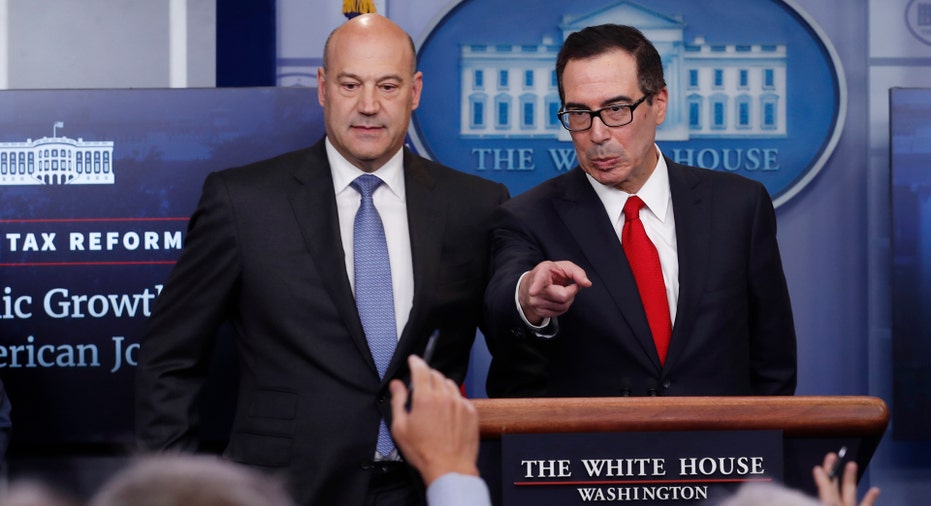Trump's Tax Plan: Doubles Standard Deductions, Ends ‘Death Tax’

The Trump administration unveiled the outline for its comprehensive tax overhaul proposal Wednesday, which included a simplification of the tax code, a cut to individual and corporate rates and the elimination of most tax benefits on the personal side.
“[This is the] most significant tax reform legislation since 1986 and one of the biggest tax cuts in American history,” National Economic Director Gary Cohn said during a press conference Wednesday.
While Cohn said the administration anticipated attacks “from the left and right” over the plan, he said the aim is to “create jobs and economic growth.”
Standard Deductions Double
The plan calls for a sizable increase to the standard deduction Americans can take when filing taxes, potentially allowing taxpayers to keep more of their income – to the tune of a couple thousand dollars.
Under the proposal, tax breaks for individuals and married couples filing separately will increase from $6,300 to $12,600. The standard deduction for a married couple filing jointly will jump from $12,700 to approximately $24,000, “so that a married couple will not have to pay taxes on the first $24,000 it earns,” said Cohn
Additionally Trump’s tax package would eliminate all benefits on the personal side with the exception of retirement savings, charitable giving and mortgage interest.
The White House plan also would eliminate the alternative-minimum tax and the “death tax” (aka estate tax), but Cohn refused to comment on the status of the marriage penalty.
Three Tax Brackets
The new proposal calls for the collapse of the current seven-tier bracket system to just three brackets, with a decrease in the top tax rate from 39.6 percent to 35 percent. Previous floated proposals had the top rate at 33 percent. The administration aims to set the other two tax rates at 25 percent and 10 percent, the latter down from an initial 12 percent proposal.
While critics have accused the administration of looking to give tax relief to the rich, this revised proposal would be a smaller-than-expected break for the richest Americans in the country. It could also alleviate some concerns over substantially increasing the deficit.
Biggest Corporate Tax Rate Cut in History
“In 2017 we are still stuck with a 1988 corporate tax. That’s why we are one of the least competitive countries in the corporate world when it comes to the corporate tax,” Cohn said.
The administration also proposed cutting the corporate tax rate by twenty percentage points, from 35 percent to 15 percent and switching it from a worldwide taxation system to a territorial one.
A territorial taxation process taxes only the income earned by a company within the specific country. The intention of this switch is to drive investment back into the country and stop companies from moving their headquarters overseas to avoid the burden of heavy American tariffs.
While the administration insists the tax reform package will pay for itself, creating “trillions of dollars of additional revenues,” the cut in the corporate tax rate alone could cost the country $2.1 trillion through the year 2026, according to an analysis by the Tax Foundation.



















